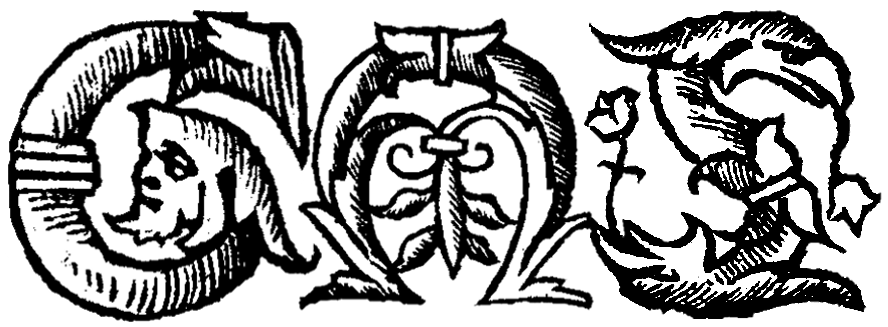Chronicle of King Peter I [Prologue] | Chronica del Rey D. Pedro [Prologo]
Introduction to the Text
Written by Fernão Lopes (1380-90?-1460), the first Royal Chronicler of the kingdom of Portugal, the Crônica de D. Pedro I (Chronicle of Peter I) was probably composed in the first half of the fifteenth century. It belongs to the earlier tradition of late medieval royal chronicles (c. 13th and 14th centuries), histories that narrated important events in the lives of kings, aristocrats, and kingdoms. Common in France, Portugal, Castile, and Aragon, such histories often combined a very positive account of the king’s life—as a means of simultaneously praising him and recording his actions—with the intent of presenting lessons on how to rule a kingdom, drawn from the king’s achievements and mistakes.
The events described in the Chronicle of Peter I took place between the years 1357 and 1367. Those years were important for the Portuguese kingdom, because they preceded a change in its ruling family in 1383-1385, when the family of Avis replaced Peter I’s family, the kings of Bourgogne. The first king of the Avis family, John I, was Peter I of Bourgogne’s illegitimate son. In a way, writing the history of Peter I’s reign of Portugal meant narrating the beginnings of John I’s ascension to the Portuguese crown.
It was under John I, in 1418, that Fernão Lopes was appointed the Royal Keeper of the Archives (Guarda-Mor). Lopes was responsible for keeping the official records of the kingdom of Portugal, such as royal decrees and treaties. After holding that position for 26 years, Lopes was appointed as the first Royal Chronicler (Cronista-Mor) in 1434, by king Edward I, John I’s son. Lopes was then assigned the task of writing the official history of the kings of Portugal, in addition to his role as the Royal Keeper. It was probably after he was appointed as the Royal Chronicler that Lopes started writing the Chronicle of Peter I. In the prologue presented here, we see how Lopes’s two positions influenced his writing. He attempts to balance a faithful record of past events, as expected from a royal archivist, with trustworthy praise of Peter I, as expected from the royal chronicler.
This double role partly explains why the Chronicle of Peter I is unique among late medieval chronicles. First, Lopes’s interest in historical accuracy distinguishes his work. He explained his vision of historical writing in the prologue to another work, the Crônica Del Rey D. João I (Chronicle of King John I). There he claimed that past chronicles often showed too much “affectionate bias” (mundanall afeiçom) in favor of the king, which ended up obscuring the truth about the events.
A second distinctive feature of Lopes’s Chronicle is how he focuses on people other than the king. Late medieval chronicles tended to concentrate mostly on the person of the king and those closest to him, his aristocracy. As this prologue illustrates, however, the chronicle’s main subject is not Peter I’s person, but his importance for both the laws of the kingdom and the life of its people. The Chronicle of Peter I is made up of a prologue and 46 chapters. The prologue presents Lopes’s interpretation of Peter I’s reign, while the chapters focus on specific events, covering topics such as internal policy (justice, monetary policy), Portuguese maritime exploration, the relationships with the kingdoms of Castile and England, Portugal’s involvement in the fight against the Muslim kingdoms, Peter’s forbidden love affair with Inês de Castro, and others.
The Chronicle of Peter I was well received in late medieval Portugal. It helped other chroniclers frame the kingdom’s official history, emphasizing how the life of the king and the life of the kingdom were inseparable. After Lopes’s Chronicle of Peter I, telling readers how they should interpret the facts narrated in a chronicle became as important as getting the facts right. What Lopes achieves in the prologue of the Chronicle of Peter I—namely an innovative way of relating events in the king’s life to what happened to both the people and the kingdom—had a long afterlife, influencing other official chronicles until at least the end of the sixteenth century.
This work is paramount for those who wish to understand how Portuguese state-sponsored chronicles helped shape the kingdom as a collective entity.
Introduction to the Source
The National Library of Portugal (BNL) holds the manuscript from which the Prologue was transcribed and translated. The BNL catalogue dates the manuscript to 1475-1525. (The online catalogue entry can be viewed here.) Before this manuscript arrived at the BNL, it was in the possession of a Jesuit College in Évora, Portugal, the College of the Holy Spirit.
This manuscript comprises two chronicles by Fernão Lopes, the Chronicle of Peter I and the Chronicle of Ferdinand I, both written with the same hand. It can be viewed online here. Unfortunately, no surviving copy from the time of its production remains (c. 1440), but there are a few other copies made in the late fifteenth and early sixteenth centuries, between the years of 1525 and 1600. The presence of these early modern manuscripts, written with different hands, indicates that manuscript versions of the Chronicle of Peter I still circulated in the fifteenth and sixteenth centuries.
Credits
Transcription by Leonardo Grao VellosoTranslation by Leonardo Grao VellosoEncoded in TEI P5 XML by Mae Velloso-LyonsSuggested citation: Fernão Lopez. "Chronicle of King Peter I [Prologue]." Trans. Leonardo Grao Velloso. Global Medieval Sourcebook. http://sourcebook.stanford.edu/text/lopes-chronicle-prologue. Retrieved on April 19, 2024.
